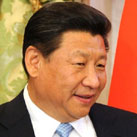Assessing Maritime Power in the Asia-Pacific, edited by Greg Kennedy and Harsh V. Pant
Since taking over in 2009, the Obama Administration considered Asia to be significant for power cooperation and for establishing an international order based on accepted rules and norms. This started the journey of a much-debated concept that was first called the ‘Back to Asia’ strategy and later re-termed as a ‘Rebalance’ or ‘Pivot to Asia’. In November 2011, then American Secretary of State, Hillary Clinton, in an article titled ‘America’s Pacific Century’, reiterated the importance of Asia-Pacific for the United States (US).
- Sarabjeet Singh Parmar |
- July 2017 |









